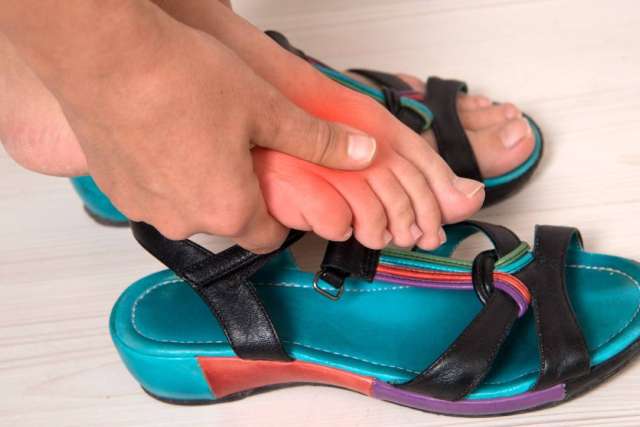Summer footwear is made to be easy, breezy and fun. Unfortunately, that often means strappy, unsupportive and synthetic. And when you go from winter’s sturdy sneakers or structured boots to footwear that’s barely there, minor irritations like blisters are inevitable. But the bigger problems arise over time, from wearing flimsy footwear summer after summer.
Here's what you need to know:
How sandals affect your feet
A study conducted by the American Podiatric Medical Association found that 80% of participants experienced at least one foot pain or problem in the last year. Such issues range from blisters and ingrown toenails to heel pain and pinched nerves. And it’s no wonder, since 64% of Americans admit they wear shoes that hurt their feet — 12% even say they choose uncomfortable shoes daily.
Even if your summer staples include flip-flops and sandals that seem to fit perfectly, foot pain can emerge due to years of insufficient arch support. Your arches help bear your body’s weight and propel you forward when you walk, run or jump. Without proper support, your feet flatten and the arch collapses, straining and weakening the ligaments and tendons surrounding it. The result can be foot pain, inflammation and swelling.
Feet are like the foundation of a building, responsible for holding up the body’s weight and maintaining its stability. Changes to your feet can eventually affect your ankles, knees, hips and posture.
Summer shoe styles most likely to cause foot pain and injuries
While some people continue to wear sneakers during the hot summer months, most of us turn to our favorite summer sandals. Unfortunately, the most popular warm weather styles tend to cause the most problems:
- Flats, slides and flip-flops offer inadequate cushioning and support, often resulting in arch and heel pain (though slides provide the most support and stability of the three).
- Gladiator and strappy sandals offer very little support or shock absorption, with the straps often causing irritation between the toes and on the tops and sides of the feet.
- High heels and platform sandals lead to pain in the ball of the foot and may cause ankle injuries.
- Peep-toe sandals put increased pressure on toes – especially if you have bunions (bony bumps that form on the base of big toes) or hammertoes (toes that are abnormally bent at the middle joint).
- Wedges & espadrilles are better than stilettos, but still cause instability that can lead to ankle twisting or spraining.
Tips for choosing summer sandals to avoid foot pain
The good news is that no one is asking you to completely give up the joy of summer sandals. But making some better footwear choices in the warmer months may save you years of foot pain:
- Go to specialty stores, where sales associates can measure your feet properly and match you with supportive shoe brands and styles.
- Shop for high-quality, soft leather, which causes fewer blisters and less irritation than synthetic materials.
- Check the fit to make sure your toes or heel aren’t hanging off the edge of flip-flops or sandals.
- Choose flip-flops wisely, making sure they have arch support and some padding to cushion the ball of your foot.
- Switch up your shoes often to avoid wearing unsupportive footwear for long periods of time.
- Consider orthotics and insoles to provide arch support and heel stability that can relieve stress on your feet and body.
When to see a doctor for foot pain
Foot pain that occurs with walking, weight bearing or toe flexing should be checked out by your primary care physician or a podiatrist. They can offer practical solutions, recommendations for footwear or orthotics and stretching exercises that may relieve the pain.
Persistent blisters, redness and swelling are also a cause for concern — self-diagnosis and treatment may delay healing or even cause more problems. Seeing your doctor can help you avoid infection, speed up recovery and possibly identify another health condition.
If you are experiencing foot pain, reach out to your primary care physician or any UCLA Health podiatrist.



